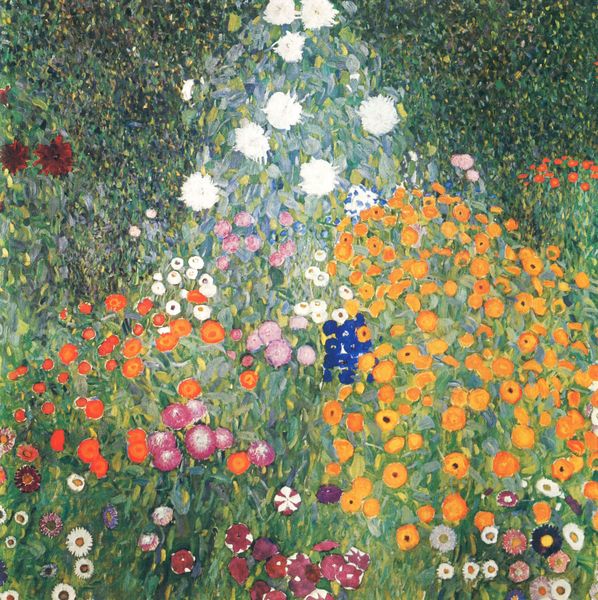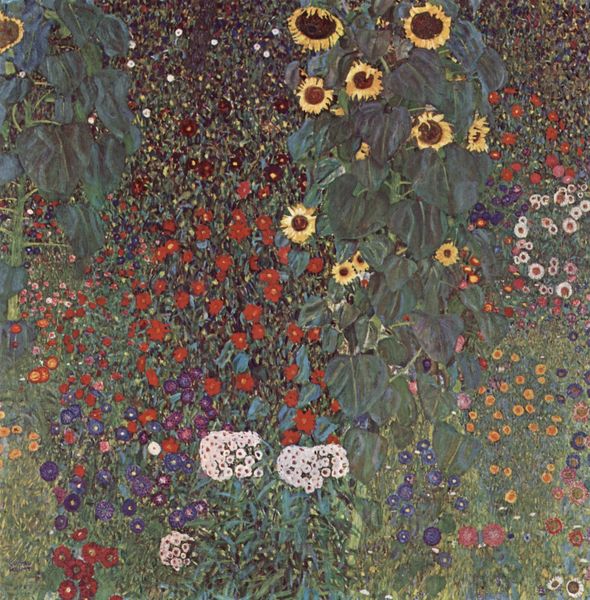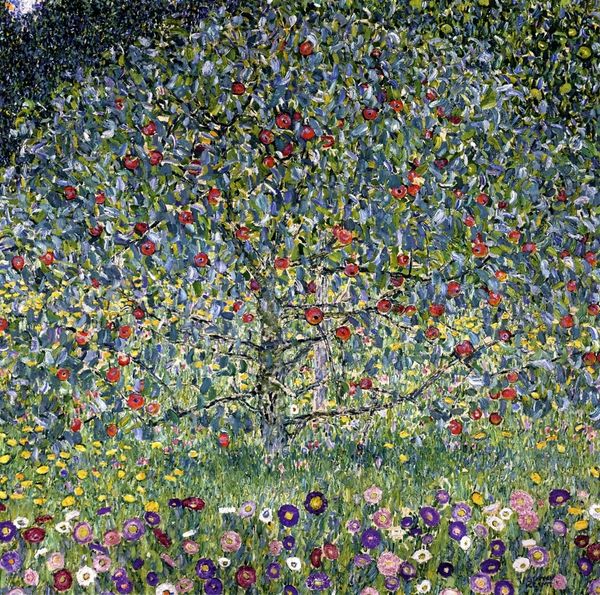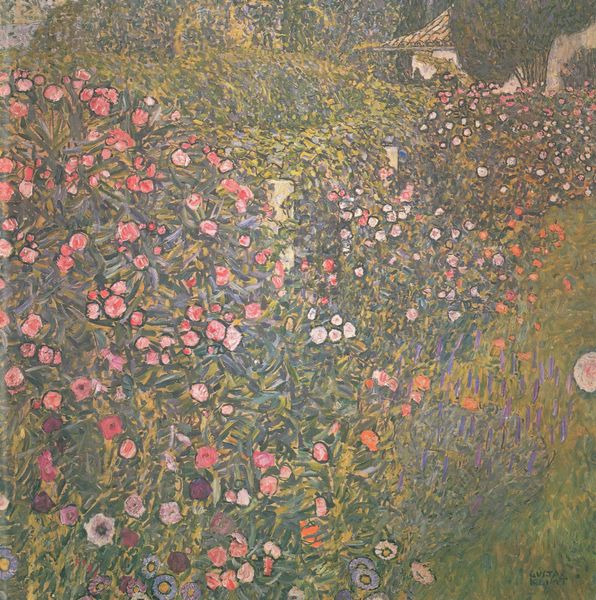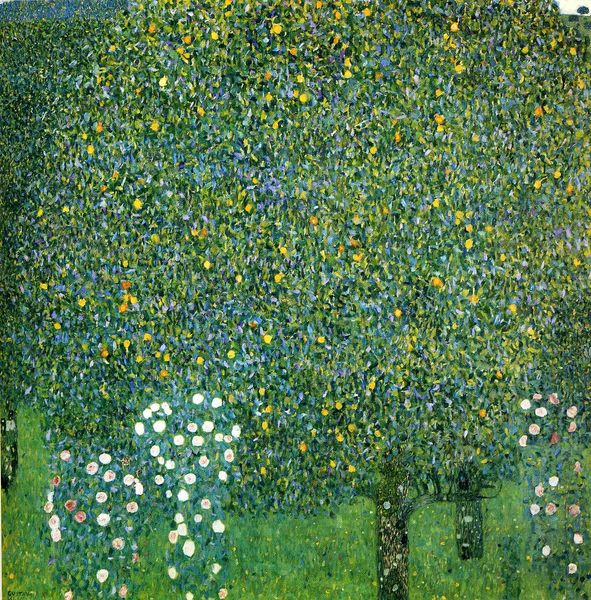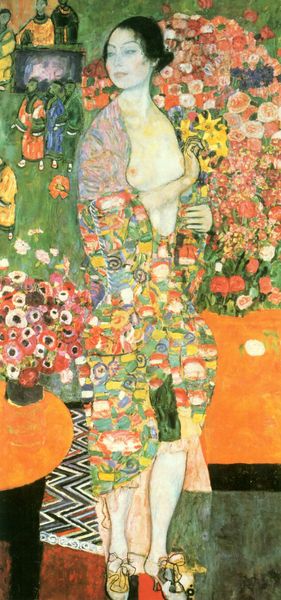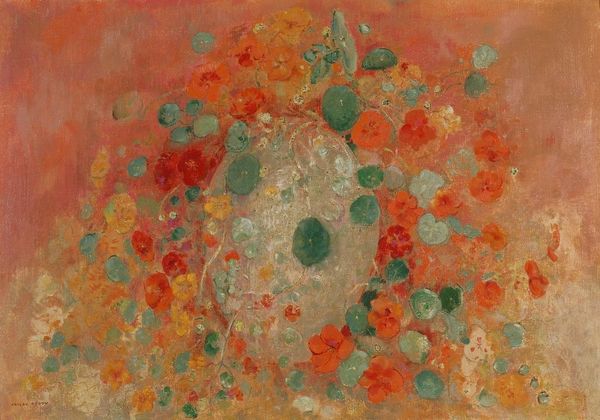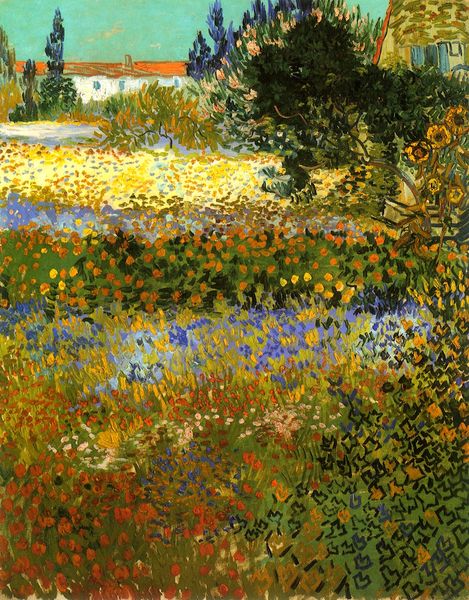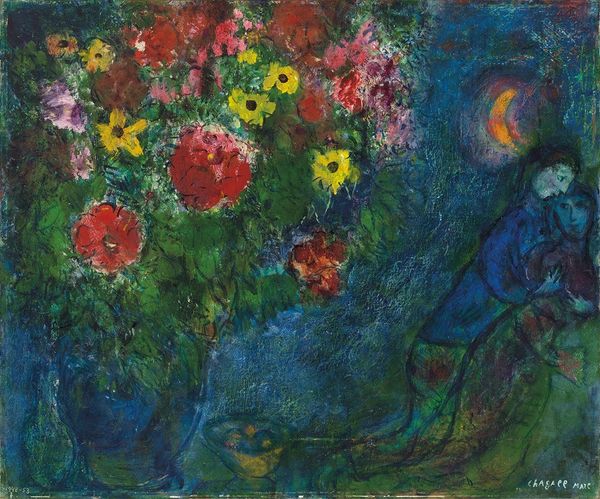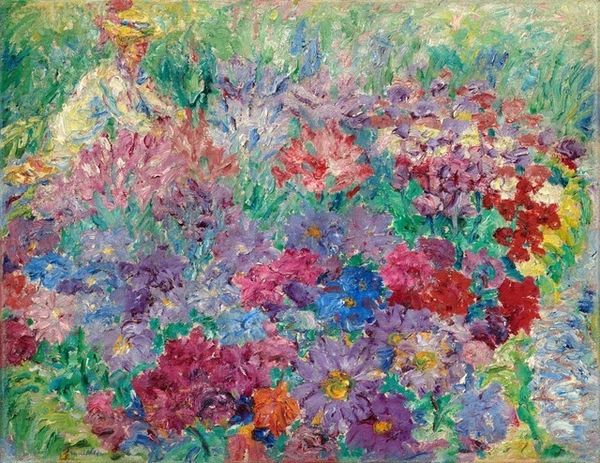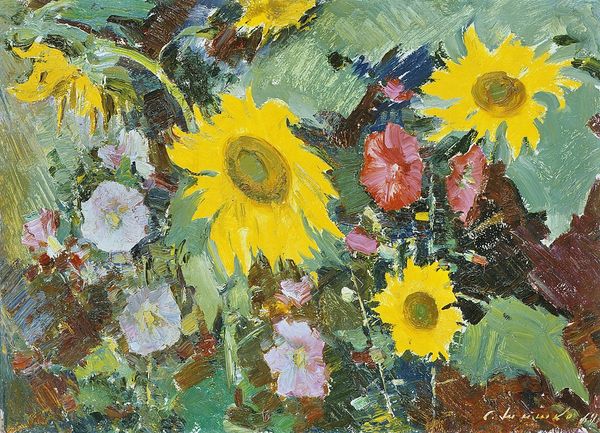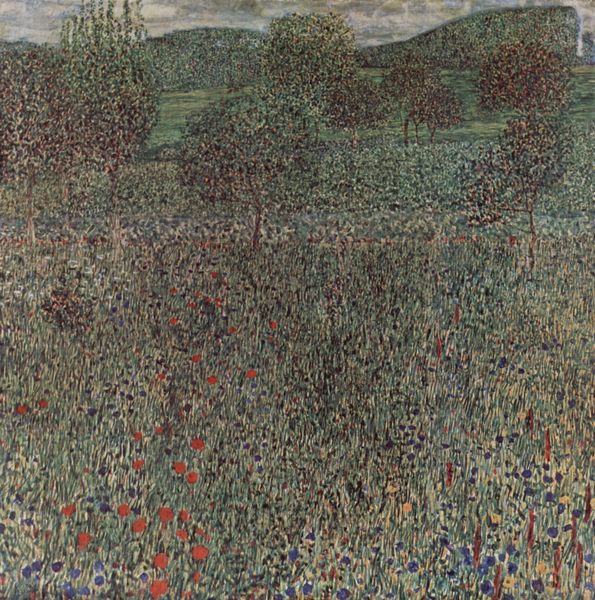
Dimensions: 110 x 110 cm
Copyright: Public domain
Editor: Here we have Gustav Klimt’s "Blumengarten," painted in 1907. It's an explosion of color and pattern; the surface almost pulsates with life. What can you tell me about how this piece was made? Curator: Considering the time and place, Vienna in the early 20th century, we see Klimt engaging with an increasingly industrialized society through a re-examination of labor. Notice how the almost obsessive repetition of daubs of paint mimic the regimented labor of the factory, but instead of producing a standardized product, Klimt gives us individual blossoms, each a unique application of material. How does that tension strike you? Editor: It makes me think about how artists were responding to mass production. Was he rejecting or embracing it with his own handmade “products?” Curator: Precisely! The layering of oil paint becomes a physical manifestation of time and labor. Think about where the materials themselves came from. Pigments sourced globally, refined through industrial processes, and then painstakingly applied by Klimt himself. There is something potent in this material journey. Editor: So, beyond just seeing a pretty flower garden, you're pointing to how Klimt is commenting on the processes that make up our world? Curator: Absolutely. And consider the social context. Vienna was a hub of consumerism. Klimt’s flowers, reproduced on prints and postcards, became commodities themselves. He blurs the line between high art and mass-produced object. He transforms laborious acts of applying the paint material into something that evokes a pre-industrial world but at the same time acknowledge the means of production. How can we avoid acknowledging our entanglement with materiality when experiencing art? Editor: I never thought of it that way. So it’s about more than just what's depicted; it's about the making and the materials themselves, and the means of distribution. That gives me a lot to consider. Thanks. Curator: It’s a pleasure to rethink those old questions through new methods.
